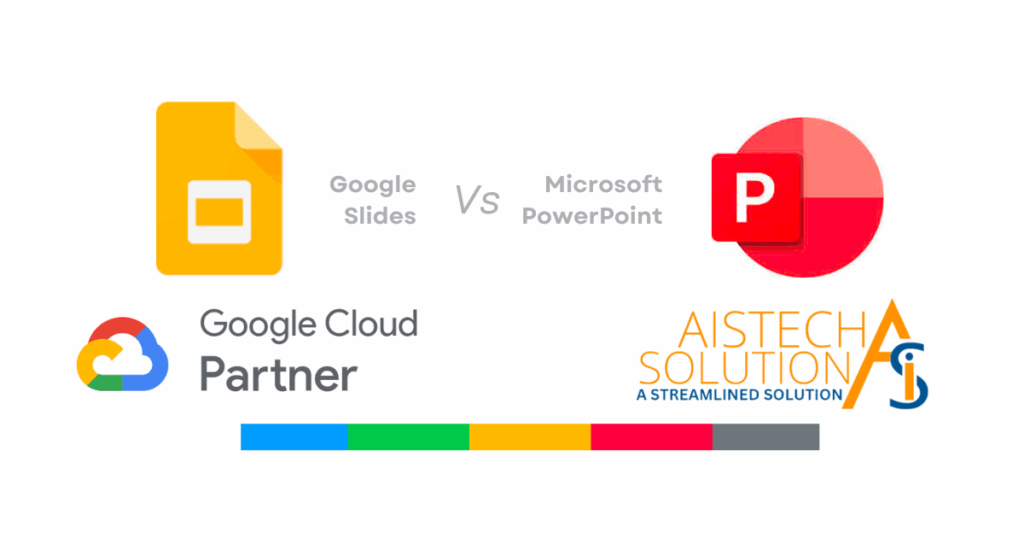When it comes to crafting captivating presentations, two giants dominate the realm – Google Slides and Microsoft PowerPoint. Both platforms offer powerful tools and features, but they have distinct differences that cater to different needs and preferences. In this blog post, we will delve into the key differences between Google Slides and Microsoft PowerPoint, helping you choose the ideal platform for your presentation endeavors.
Join me on this thrilling journey of Unraveling the Differences Google Slides vs Microsoft PowerPoint.

- Accessibility and Collaboration: One of the fundamental differences between Google Slides and Microsoft PowerPoint lies in their accessibility and collaboration capabilities. Google Slides, being web-based, allows users to create and edit presentations directly in the browser, making it easy to collaborate with team members in real-time. Multiple users can work simultaneously on the same presentation, leaving comments and tracking changes effortlessly. On the other hand, Microsoft PowerPoint, while offering collaboration through Office 365, may not provide the same level of seamless real-time co-authoring as Google Slides.
- User Interface and Ease of Use: User-friendliness is a critical factor in presentation software. Google Slides is known for its simple and intuitive interface, making it easy for beginners to get started. Its integration with other Google Workspace apps streamlines the process of adding content from Drive, Sheets, and Docs. Microsoft PowerPoint, with its classic and familiar interface, appeals to users already accustomed to Microsoft Office products. While it offers a plethora of features, some users may find its interface more complex compared to Google Slides.
- Design and Customization: When it comes to design and customization, both platforms have their merits. Google Slides offers a modest collection of templates and themes, but it encourages users to explore their creativity by allowing extensive customization of colors, fonts, and layouts. Microsoft PowerPoint, on the other hand, boasts a wide array of pre-designed templates that cater to various styles and preferences. The availability of downloadable templates further enhances design options, making PowerPoint an attractive choice for those seeking visually stunning presentations.
- Offline Editing and Mobility: The ability to work offline and on mobile devices is crucial for presenters on the go. Google Slides provides mobile apps for Android and iOS devices, enabling users to edit presentations on their smartphones and tablets. However, its offline editing capabilities are limited, requiring an internet connection for optimal functionality. Microsoft PowerPoint shines in this aspect, offering robust offline editing options, ensuring presenters can work on their presentations without internet constraints.
Conclusion: In the realm of presentations, both Google Slides and Microsoft PowerPoint are powerful contenders, each with its unique strengths. Google Slides excels in seamless collaboration, real-time co-authoring, and user-friendliness, making it an excellent choice for remote teams and those who value cloud-based accessibility. Microsoft PowerPoint, on the other hand, offers extensive design options, offline editing capabilities, and a familiar interface, appealing to users who prioritize visually engaging presentations and design versatility.
Stay tuned for more exciting updates, tips, and tricks on how to make the most of other Google Workspace tools to boost your productivity and collaborate like a pro!
Take the first step and Contact us now. We will help you to get the most out from Google Workspace.
